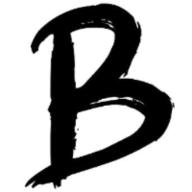Chinese New Year FooD
for the Quit
Chinese New Year FooD
2008-10-23 6:23 am
回答 (2)
2008-10-23 6:32 am
✔ 最佳答案
On New Year's Day, the Chinese family will eat a vegetarian dish called jai. Although the various ingredients in jai are root vegetables or fibrous vegetables, many people attribute various superstitious aspects to them: * Lotus seed - signify having many male offspring
* Ginkgo nut - represents silver ingots
* Black moss seaweed - is a homonym for exceeding in wealth
* Dried bean curd is another homonym for fulfillment of wealth and happiness
* Bamboo shoots - is a term which sounds like "wishing that everything would be well"
* Fresh bean curd or tofu is not included as it is white and unlucky for New Year as the color signifies death and misfortune.
Other foods include a whole fish, to represent togetherness and abundance, and a chicken for prosperity. The chicken must be presented with a head, tail and feet to symbolize completeness. Noodles should be uncut, as they represent long life.
In south China, the favorite and most typical dishes were nian gao, sweet steamed glutinous rice pudding and zong zi (glutinous rice wrapped up in reed leaves), another popular delicacy.
In the north, steamed-wheat bread (man tou) and small meat dumplings were the preferred food. The tremendous amount of food prepared at this time was meant to symbolize abundance and wealth for the household.
圖片參考:http://tw.yimg.com/i/tw/ugc/rte/smiley_1.gif
2008-10-22 22:36:52 補充:
For more detail︰
http://www.chinatownconnection.com/chinese-new-year-food.htm
http://www.slashfood.com/2006/01/27/chinese-new-year-food-traditions-and-symbolism
http://www.dimsum.co.uk/food/chinese-new-year-food.html
參考: educ
2008-10-27 6:52 am
On the first day of the New Year, some people eat vegetarian food.
Childern can enjoy different kinds of food such as New Year cake, turnip cake and fried snacks.
Sweets,chocolate, melon seeds and lotus seeds are placed in the confectionery box.
Childern can enjoy different kinds of food such as New Year cake, turnip cake and fried snacks.
Sweets,chocolate, melon seeds and lotus seeds are placed in the confectionery box.
收錄日期: 2021-04-25 23:25:56
原文連結 [永久失效]:
https://hk.answers.yahoo.com/question/index?qid=20081022000051KK02128


